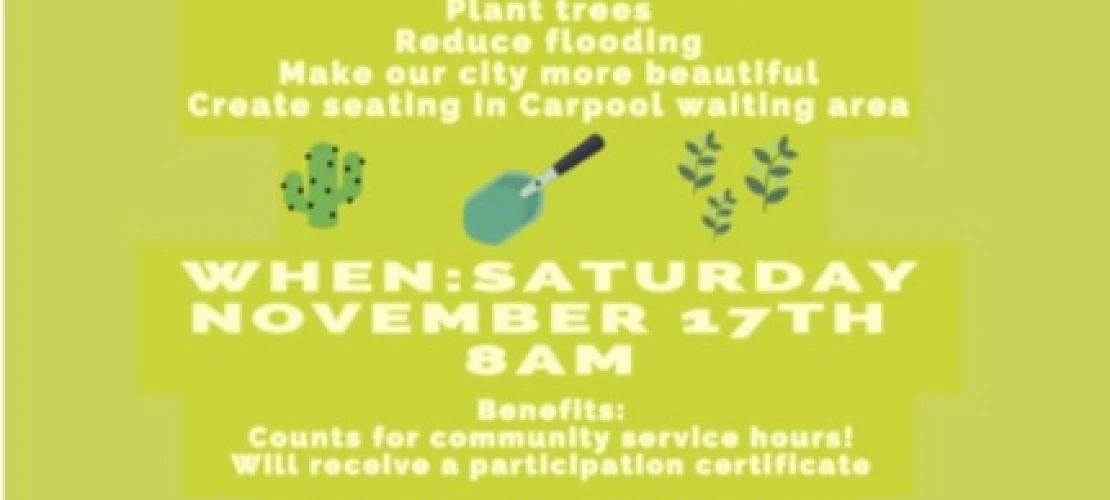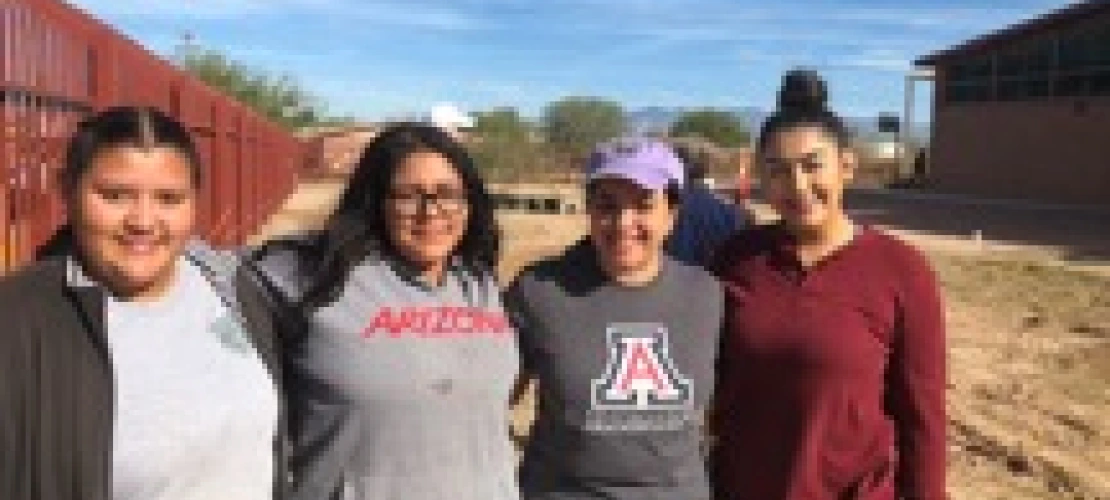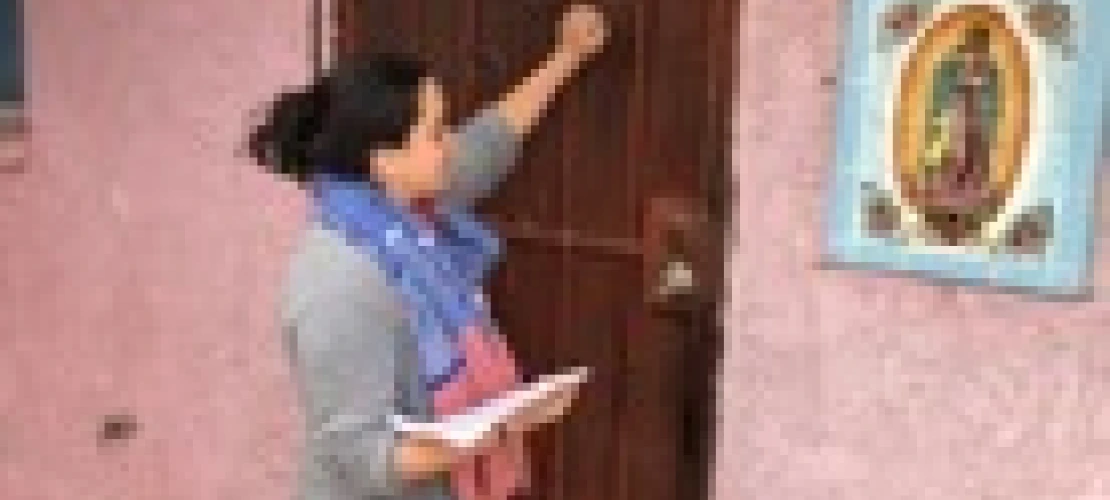By Maryam Rouhani
12/17/18 06:50:pm
As a University of Arizona undergraduate student about to graduate from the Sustainable Built Environments degree program, I am very pleased to have participated in a project that translates theory into practice. Throughout this fall 2018, I worked as an intern at the Udall Center for Studies in Public Policy under the supervision of Dr. Adriana Zuniga on the Star Barrio Verde project. This project aims to bring green infrastructure to Star Academic High School, located in a low-income neighborhood of Tucson. For this project, there were five teams that addressed one component of the project – (1) green infrastructure, (2) arts & education, (3) transportation, (4) communications, and (5) community engagement.
My participation on the Star Barrio Verde project focused on community engagement. During my studies, I have heard so much talk about the importance of “community engagement,” so it was exciting for me to have the opportunity to see what it was really like to engage with the community. Our main objective was to invite Star students and neighbors to participate in the implementation of green infrastructure event scheduled for Nov 17, 2018 and the celebration event scheduled for December 8, 2018.
The main members of the community we wanted to engage with were the people that live in the homes surrounding Star Academic High School located in the south side of Tucson, Arizona, and of course the students that attend Star. We had different approaches to engage each of these segments of the community.
For the Star students, the most important thing was spending as much time with them as possible in the month leading up to the implementation day. We also wanted to make sure that they felt some ownership of the process and were empowered to take action to better their school. In order to get more time interacting with Star students, we actually joined in with the efforts of the other team that was engaging with students as well: the art team. The art team planned to spend time in the art class developing art work for the project, and by going to the school with them and helping the students with their artwork, I was able to get to know some of the students very well.
While I was in the art classes at the school, I would ask the students if any of them felt excited about the project and wanted to take on a bigger role. Some of the students responded enthusiastically to this, and I was able to collect their names and contact information. The following week, I invited those students to meet with the community engagement team to create a flyer that we could distribute to other Star students.
We had three students meet with us at lunch on campus to design the flyer. To start, we helped the students brainstorm about all of the different pieces of information we should include on the flyer. It was interesting to see what components they thought should be emphasized. For example, they wanted to make sure that we said on the flyer that the hours worked could count toward community service. They also wanted to emphasize that food and drink were provided. In terms of the aesthetics of the poster, they wanted it to be very colorful so that it would stand out and be noticed.
The following week, our team got permission from the principal to visit every seminar class in the school to present about the project and hand out the flyer we created. This was an awesome opportunity to make sure every single teacher and student was aware about what was happening at their school. I think this was very important because even though not all of them participated, at least everyone would know the significance of the changes taking place on their campus. That day, we had people who were interested in participating sign up so that we could have their contact information to send out reminders throughout the week.
The other piece of our efforts was to engage with the surrounding community. To do this, we made another flyer, in both English and Spanish, that described the green infrastructure project at the school and invited everyone to participate. Then, we went door to door and tried to talk to all of the neighbors so that we could tell them about the project. We were able to talk with many of the neighbors about the project, and for those that were not home we left them a flyer at the door. Although no one from the surrounding neighborhood took up our invitation to come help out with the project, we were happy to know that they were aware of what was happening there and why.
On the implementation day, we were very excited to see several young people from Star had come to participated in the creation of rain gardens at their school. It was very gratifying to see so many of the students I had talked to and engaged with actually make the effort to come help. I tried to help break the ice and to make the students feel comfortable that day. I also became aware of students that seemed to be having trouble figuring out what they could do so I could help them find a task.
Overall, the biggest lesson that I learned is that community engagement can be simple, but it takes time. The more you are able to connect with people and truly become their friends, the easier it is to talk about their hopes for their neighborhood and the more likely they are to join you in making an effort to create positive change. I truly enjoyed getting to know the students at Star and am so thankful for the opportunity I had to work with them.




